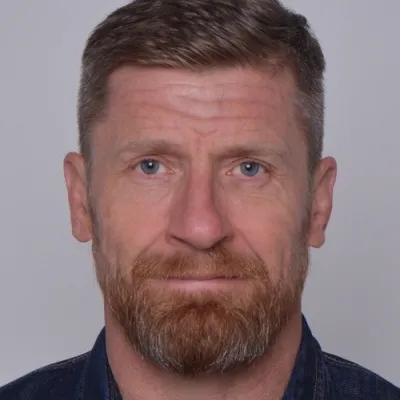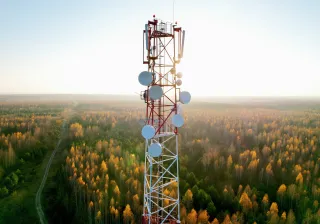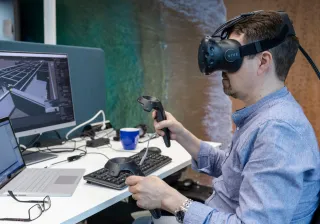6G is already pushing the boundaries of connectivity – but the future doesn’t stop there. Going beyond 6G marks a fundamental shift: not just improving existing capabilities, but rethinking the entire system. From quantum computing to seamless ambient connectivity, this next leap will transform how we interact with technology, data and each other.
In our white paper, we thoroughly discuss what the 6G landscape looks like and what it takes to go beyond that. This blog offers a glimpse into the subject.
Here are nine key aspects we need to address to shape communication systems beyond 6G:
1. Quantum technologies for power and resilience
Quantum networking and quantum memory will significantly boost computational power and system resilience. These technologies enable secure, distributed computing – essential for mission-critical applications in a connected world.
2. Versatile connectivity enables efficient communication
Future networks will integrate satellite, terrestrial and optical fibre solutions to ensure reliable, high-performance connectivity and computing everywhere – including remote and underserved areas. Side link technology and unconventional “weird” networks will further enhance robustness and accessibility.
3. AI by design improves operation and management
AI won’t just support the network – it will be part of it. Embedding AI into physical infrastructure allows systems to self-optimise, adapt and respond in real time, simplifying management and improving user experience.
4. Programmability and automation create agility and responsiveness
Networks will become highly programmable, enabling faster deployment of new services and reducing the need for costly upgrades. Automation will enhance responsiveness, support sustainability and improve return on investment.
5. The role of end-user devices will change
The future points toward a post-smartphone era. Devices will disappear into our surroundings – embedded in furniture, clothing or appliances – turning our environment into a service platform.
6. Managing the growing volume of data
Exponential data growth calls for smarter ways to process and route information. Distributed computing, edge processing and data flow optimisation will be key to maintaining performance and continuity.
7. Reducing energy consumption
Energy efficiency will be non-negotiable. Optical and photonics-based solutions will play a central role, lowering consumption and improving network performance while supporting green transition goals.
8. Harmonising global regulation and standardisation
Global interoperability will require aligned regulations and standards. With increasing cross-border data flows and societal reliance on connectivity, protecting against breaches and ensuring seamless integration will be essential.
9. Unlocking commercial potential
Technology moves fast – business models slower. To unlock value, we need new use cases, demand-driven innovation and scalable services. Combining connectivity with AI offers immense potential, from personalised assistants to autonomous systems.
As we imagine networks beyond 6G, we must stay grounded in research while daring to think big. After all, many of today’s everyday technologies were once science fiction. Now’s the time to shape the next reality – with courage, collaboration and vision.
Want to shape that with us? Read our white paper or contact us to get started. If you are interested in the benefits of 6G, you can start with this article.
Get to know our experts

Jyrki Huusko is one of Finland’s leading experts in future communication networks, autonomous network management, and AI-based network optimisation. At VTT, he leads the research environment for reliable communication connections and serves as the Principal Scientist for future intelligent communication networks and systems. Over his 25-year career at VTT, Jyrki has made a significant impact on European 5G and 6G research. He is a member of the steering group of the pan-European technology consortium NetworldEurope and chairs its Expert Advisor Group. His deep expertise includes network architectures and intelligent network management.

Petteri Annamaa is a pioneer in microelectronics and quantum technology, actively involved in developing and commercializing new technologies for industrial use. He has extensive experience working in industry as well as in the development of microelectronics and quantum technologies, and he has done groundbreaking work in these fields as well as in 6G device technology. Petteri also holds numerous patents related to antenna technologies for various telecommunications applications. In his work, Petteri aims to deeply understand customer and market needs and apply new technologies accordingly. His diverse experience in both research and industry provides a practical perspective on how emerging technologies are shaping the future.

Mika Rantakokko is a digitalisation innovator and has worked as Connectivity Lead at VTT since 2022. He promotes research and development activities as well as corporate collaboration to harness the full potential of future connectivity solutions and digitalisation. Mika’s scope of work includes technologies such as 5G/6G and quantum communication, and their application across various sectors including defense/dual-use, industry, transport, health, and smart cities. He coordinates VTT’s NATO DIANA test center operations and is actively involved in international 6G networks. His work bridges technological vision with practical solution development, advancing the creation and utilisation of intelligent and secure connections now and in the future.





